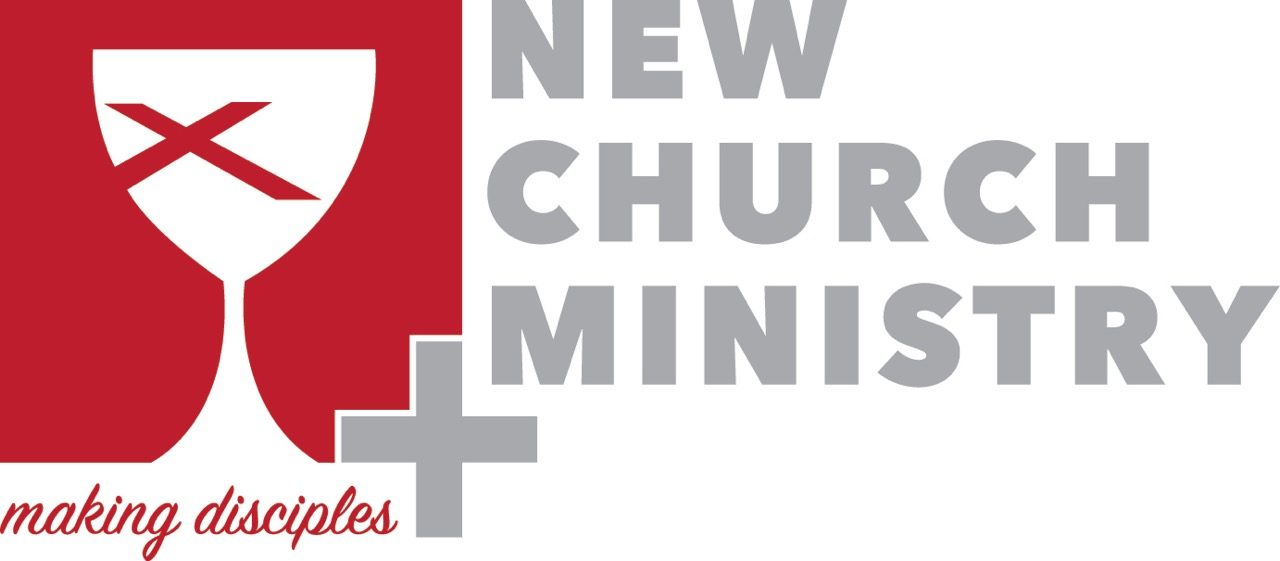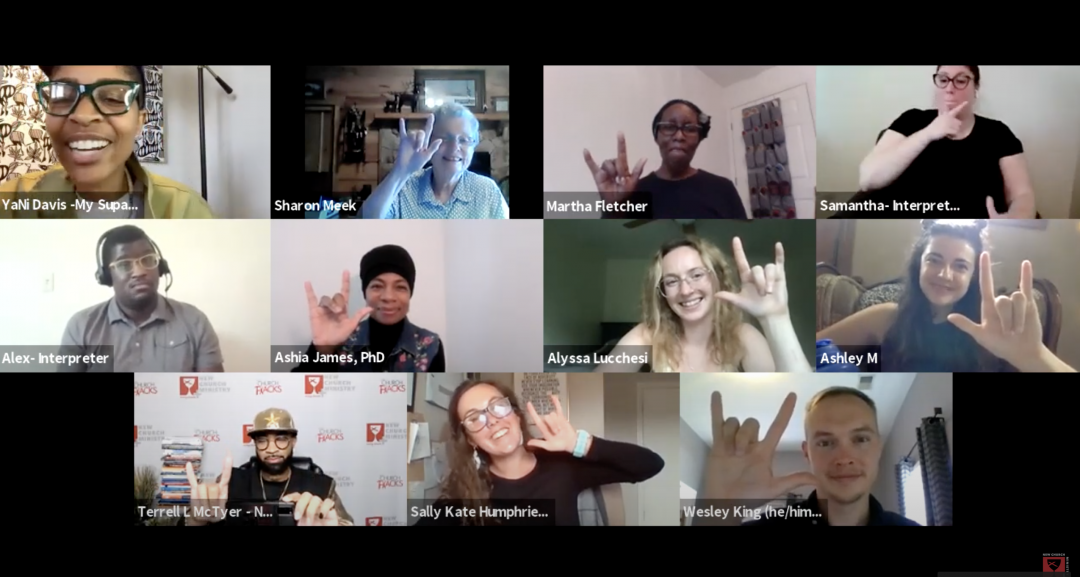For the past few years, New Church Ministry has worked hard to make its services accessible to Disciples across the United States and Canada.
It has provided Pentecost Offering resources in different languages, including Korean, Spanish, and French.
The ministry has recorded all of its New Church Hacks episodes so that people who can’t be present at the time can view the webinars at a later date.
Despite these developments, New Church Ministry hasn’t provided accommodations for those with hearing impairments or hearing loss.
“This year of social isolation has reminded me that there are people who feel isolated because they can’t hear the conversation that’s happening in the room,” shared Pastor Terrell L McTyer (Minister of New Church Strategies). “And we need to be more inclusive.”
That’s why he organized The New Wave Pentecost Series: Exploring American Sign Language (ASL) in Communal Care with My SupaNatural Life, a non-profit organization dedicated to making (w)holistic spiritual care accessible to those that need it the most, including those living with chronic conditions and their support systems. The virtual event featured art, videos, signing lessons, and interviews with panellists, who were all accompanied by an ASL interpreter on screen.

“600,000 people in the United States are deaf, and more than half are 65 years of age or older. Six million people in America report having a lot of trouble hearing,” reported Rev. YaNi Davis, My SupaNatural Life’s founder and someone who experiences hearing loss herself. “It felt timely to expand our education.”
There are 357,000 culturally Deaf Canadians and 3.21 million hard of hearing Canadians. ASL is the primary sign language used in Canada.
Participants of the event even learned how to sign the chorus from Kool and the Gang’s song “Celebration” from health educator Dr. Ashia James Ph.D.
Most importantly, the webinar provided an opportunity for people who use ASL or are deaf to share their experiences.
“It was powerful to hear the stories of those who are deaf or hard of hearing,” said Wesley King, Program Coordinator. “These experiences gave you insight into their lives and compels you to find ways that you can be more empathetic and understanding.”
Gaining insight into deaf lives
“The first time I saw Ashley, she walked into a party and started screaming,” remembers panelist Alyssa Lucchesi, a recent graduate of Rochester Institute of Technology (RIT)’s ASL program. “I was ready to go to bed, so I thought, ‘who is this girl with all this sound right now?’ because deaf spaces are very loud. The music’s bumping because deaf people love to feel that bass.”
Alyssa met her friend and fellow panellist Ashley M, who is deaf, in her first year at RIT. While they both worked as leaders at a camp for deaf youth called EYF (Explore Your Future), Ashley doesn’t consider herself a guide.
“When we’re talking about teamwork, I see myself as a peer,” clarifies Ashley. “It’s very important to be actively listening and actively watching.”
Panellist Sharon Meek was also exposed to ASL in an educational setting when she became a P.E. teacher at the Atlanta Area School for the Deaf. Her students’ experiences with hearing loss or deafness were emblematic of the ones shared by more than one panellist.
“There were kids that we taught that were deaf from birth or that had some sort of illness that caused them to lose their hearing,” recalls Sharon. “It went all the way down the continuum to those who were hard of hearing who could not function in a typical classroom.”
Things we need to do next
Over the hour spent together, attendees from as far away as Arizona, Indiana, Virginia, Georgia, Minnesota, Texas, and Michigan were taught how to expand accessibility and care for deaf and hard-of-hearing folks in their communities.
- Always include folks who are hard of hearing or deaf. Welcome them into the discussion.
- Be mindful when making videos. Think about who’s around you and in your environment. When you’re posting it to social media, ask yourself, how can I make it more visual using captions or other tools? You can turn on closed captions for YouTube videos. Zoom also recently introduced a closed captioning feature, but if it cannot generate captions, there are third parties that can do so. Make sure that the letters are large enough for people to read.
- Don’t be afraid or self-conscious about not knowing how to communicate with deaf people. Even waving, saying hello, or making eye contact are big things.
- If you’re interested in becoming an ASL interpreter, meet some deaf people, become involved, and learn the language. See if it’s for you before you register for a tech program and make a career out of it. If you want to get certified, you need a four-year degree (RIT, the University of Arizona, and Tarrant County College are good places to start). Still, you don’t need a degree if you want to interpret. Please be aware that this can pose problems for deaf people as they are the ones that suffer from unqualified interpreters. Know the spaces you’re in.
- If you really want to support the deaf community, learn about some deaf history. Meet some deaf friends and socialize. Pick up the language that way.
If you registered for our ASL event, then you’ve been automatically registered for future installments of The New Wave Pentecost Series, including our neurodiversity webinar on July 24 at 2:00 PM PST and our English as a Second Language webinar on October 23 at 2:00 PM PST. If you haven’t already signed up, you can do so here.
Stay tuned for additional information as it becomes available!

